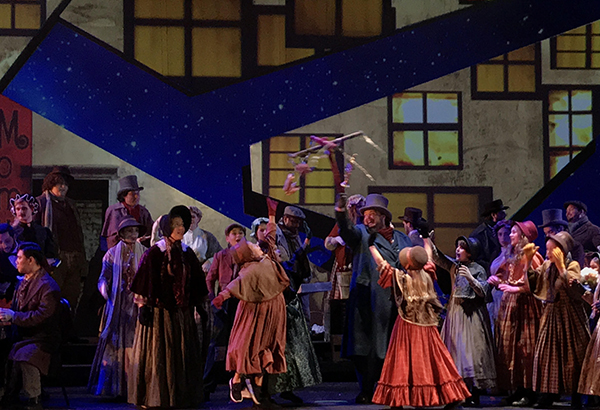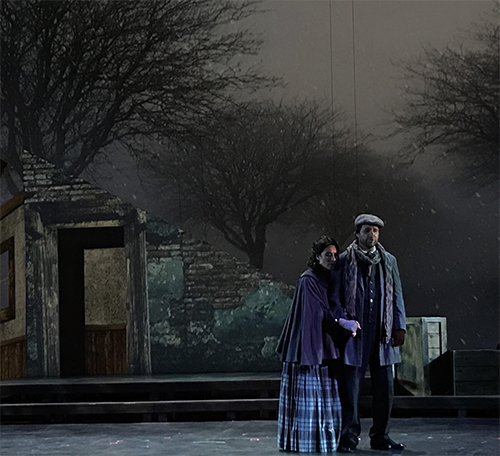by Daniel Hathaway



Jason Budd was hilarious in his dual role of Benoit the landlord and Alcindoro the beau, in both cases soundly humiliated by the Bohemians. Shaun McGrath, Jonathan Stuckey, and Matthew Mueller filled out the cast as Parpignol the toy vendor, the sergeant, and the customs officer.

Beautiful production that this was, a few problems remain with the plot. What happened to sour the relationships of Mimi and Rodolfo and of Musetta and Marcello between Christmas Eve and February? That played itself out during intermission when we weren’t looking. And it seems odd for the main characters to put off splitting up until springtime, when they think that sunshine and flowers might ease the pain.

Photos courtesy of Cleveland Opera Theater.
Published on ClevelandClassical.com September 17, 2019.
Click here for a printable copy of this article



